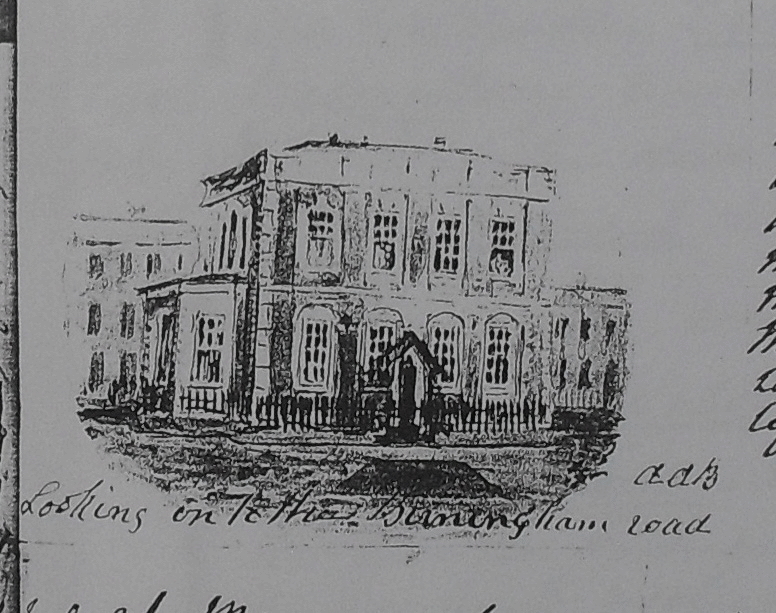Moot Halls
Sutton Coldfield became a self-governing town in 1528 by virtue of a Charter granted by King Henry VIII. The Charter stipulates that the Town Council comprise twenty-five men, to be known as the Warden and Society. Every man in Sutton aged over 21 was called on to assemble at the Moot Hall on an appointed day to choose from among themselves twenty-five good and honest men to be the first Warden and Society.
The Moot Hall was built for the town by Bishop Vesey, and stood at the top of Mill Street. It was, says the Charter, a place where the town courts were held, and all business concerning the interest or advantage of the town was conducted - these courts, a three-weekly Court of Record and a half-yearly Court Leet, were the same as the old manorial courts held before 1528, but it is not known whether the Moot Hall replaced an earlier manorial courthouse.
Bishop Vesey paid out £35 6s. 6d. for the Moot Hall, complete with a dungeon and market house. The moot hall was on the first floor of the stone building, with a dungeon and market house on the ground floor, where there was also an arcaded covered market. It served its purpose well for many years, and is not heard of again until 1671, when disaster struck - a funeral dole was being given out in the moot hall when so many people crowded in that the floor gave way.
The moot hall was rebuilt in a style similar to the old market hall at Warwick, which dates from 1670. It was declared unsafe and demolished in 1854, when Sarah Holbeche commented in her diary, beside a tiny sketch by Miss Bracken, “The building contains two large rooms and a small one. Under the sloping roof at the entrance the butter market was held (before my memory)”, and the town stocks were kept in the arcaded space beneath.
The growing town needed a new and bigger hall to replace this second moot hall, and on September 29th 1859, to inaugurate the new, third, moot hall a banquet was given there for Lord Leigh, the High Steward of Sutton Coldfield. The site at the top of Mill Street could not accommodate this larger building, so it was erected next to the old workhouse in Mill Street - most of the £4,400 cost of the building was met from compensation money paid out to the town by the London and North Western Railway.
By 1900 Sutton had received a new Charter giving it the full range of municipal powers, and the town’s population was rapidly increasing. In 1902 the council offices moved to the former hotel in King Edward Square, where a new Town Hall (the fourth moot hall) was opened in 1906. The third moot hall, (which still stands, now known as the Masonic Hall) had been sold for £4,150.
